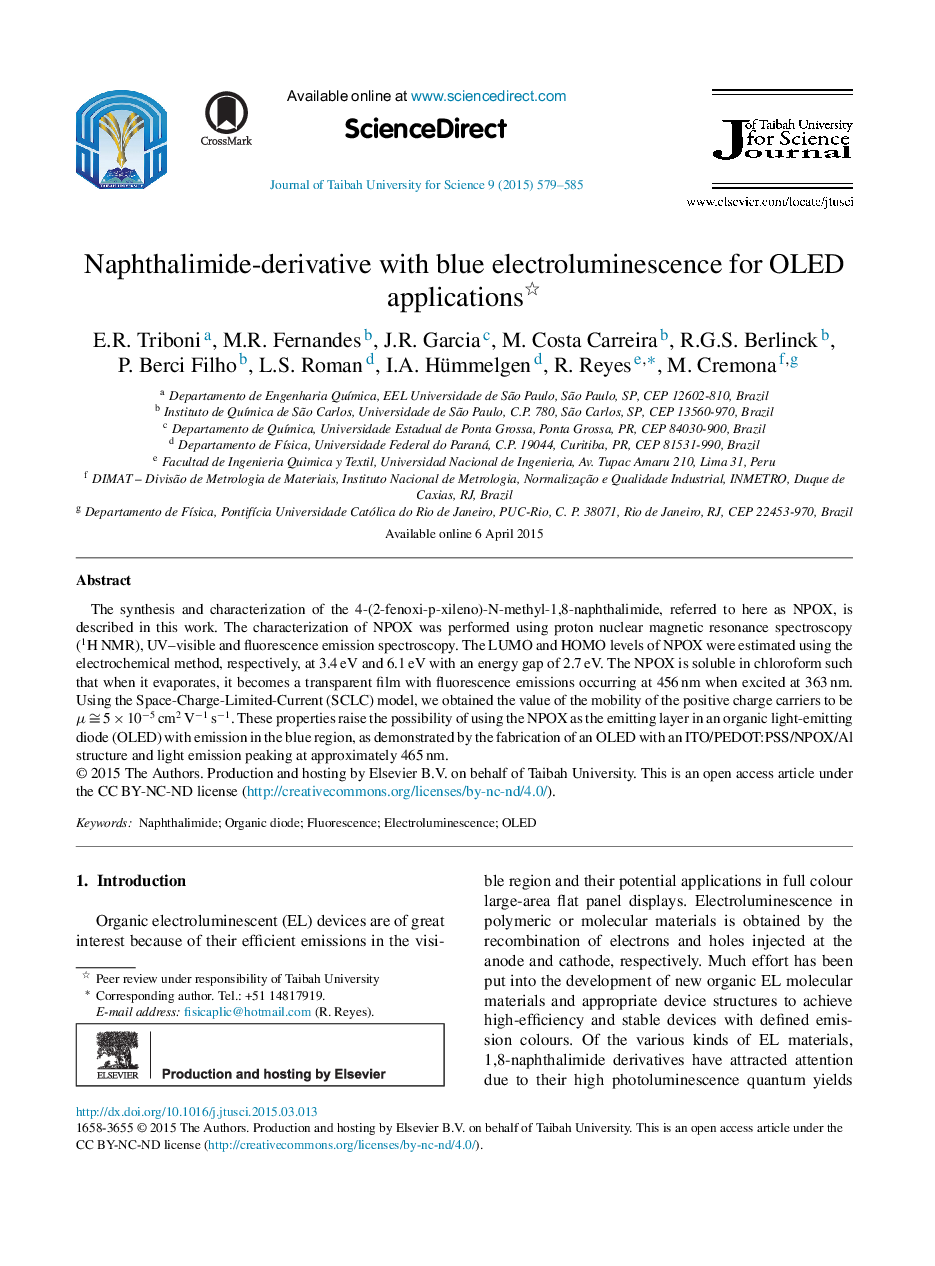| Article ID | Journal | Published Year | Pages | File Type |
|---|---|---|---|---|
| 1260748 | Journal of Taibah University for Science | 2015 | 7 Pages |
The synthesis and characterization of the 4-(2-fenoxi-p-xileno)-N-methyl-1,8-naphthalimide, referred to here as NPOX, is described in this work. The characterization of NPOX was performed using proton nuclear magnetic resonance spectroscopy (1H NMR), UV–visible and fluorescence emission spectroscopy. The LUMO and HOMO levels of NPOX were estimated using the electrochemical method, respectively, at 3.4 eV and 6.1 eV with an energy gap of 2.7 eV. The NPOX is soluble in chloroform such that when it evaporates, it becomes a transparent film with fluorescence emissions occurring at 456 nm when excited at 363 nm. Using the Space-Charge-Limited-Current (SCLC) model, we obtained the value of the mobility of the positive charge carriers to be μ ≅ 5 × 10−5 cm2 V−1 s−1. These properties raise the possibility of using the NPOX as the emitting layer in an organic light-emitting diode (OLED) with emission in the blue region, as demonstrated by the fabrication of an OLED with an ITO/PEDOT:PSS/NPOX/Al structure and light emission peaking at approximately 465 nm.
